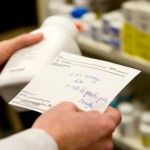Article
OxyContin Reformulation Yields Drastic Decline in Drug Diversion through Doctor Shopping
Author(s):
As the doctor shopping rate for immediate-release single entity oxycodone increased by 9 percent, reformulated extended-release OxyContin's doctor shopping rate fell by 40 percent.

Though the introduction of the tamper-deterring reformulated extended-release (ER) OxyContin (oxycodone) in August 2010 has resulted in a 60 percent reduction in reports of drug diversion by law enforcement — a considerable improvement in misuse endorsed by National Association of Drug Diversion Investigators President John J. Burke during his “Protecting Your Medical Practice: A Law Enforcement Perspective” PAINWeek 2013 session today — researchers questioned whether there has been a similar decline in the rates of drug diversion through doctor shopping.
For their “Changes in Rates of Doctor Shopping Following the Introduction of a Reformulated ER Oxycodone Product” study funded by OxyContin manufacturer Purdue Pharma LP and presented as a poster at the conference, investigators from IMS Health and Purdue examined patient and retail prescription data from the drug’s pre-reformulation period of July 2009 to June 2010 and compared it to data from the post-reformulation period of January 2011 to December 2011.
The researchers set the threshold for doctor shopping at patients who obtained overlapping prescriptions from at least three unique pharmacies and two prescribers over a six-month period, and they zeroed in on changes in doctor shopping rates for high dosage strength, cash payment for the filled prescription, patients aged between 18 and 29 years old, and the male sex, since those characteristics were most associated with drug misuse and diversion throughout the year prior to reformulated OxyContin’s introduction. To also determine whether any changes in doctor shopping were specific to ER OxyContin, the researchers compared its results to those of immediate-release single entity (IR SE) oxycodone over the same length of time.
According to the study authors, the results of the analysis showed that the rates of doctor shopping for ER OxyContin decreased 40 percent — from 1,019 doctor shopping instances among 434,104 patients in the pre-reformulation period, to 528 doctor shopping instances among 420,872 patients in the post-reformulation period — while the rate for IR SE oxycodone increased by 9 percent in that time frame.
Breaking down the changes for ER OxyContin by the aforementioned characteristics, the researchers found that “the magnitude of decline was larger for doctor shopping events involving cash payment (52 percent), 80 milligram dosage strength (52 percent), and both (61 percent), (while) the declines in rates of doctor shopping were highest for 18-29 year olds (64 percent) and for males (46 percent).”
Additionally, after examining different thresholds for doctor shopping, the investigators found an even greater decline in the rates for overlapping prescriptions obtained from at least four pharmacies and three prescribers (68.3 percent) and five pharmacies and four prescribers (82.5 percent).
“Significant declines in doctor shopping for OxyContin following the introduction of the reformulation are consistent with those from other studies demonstrating declines in abuse and diversion of OxyContin, (and) larger declines for characteristics associated with abuse and diversion supports construct validity of changes in rates of doctor shopping for OxyContin,” the authors concluded. “Introduction of a reformulated opioid provides an opportunity to validate measures of doctor shopping.”



